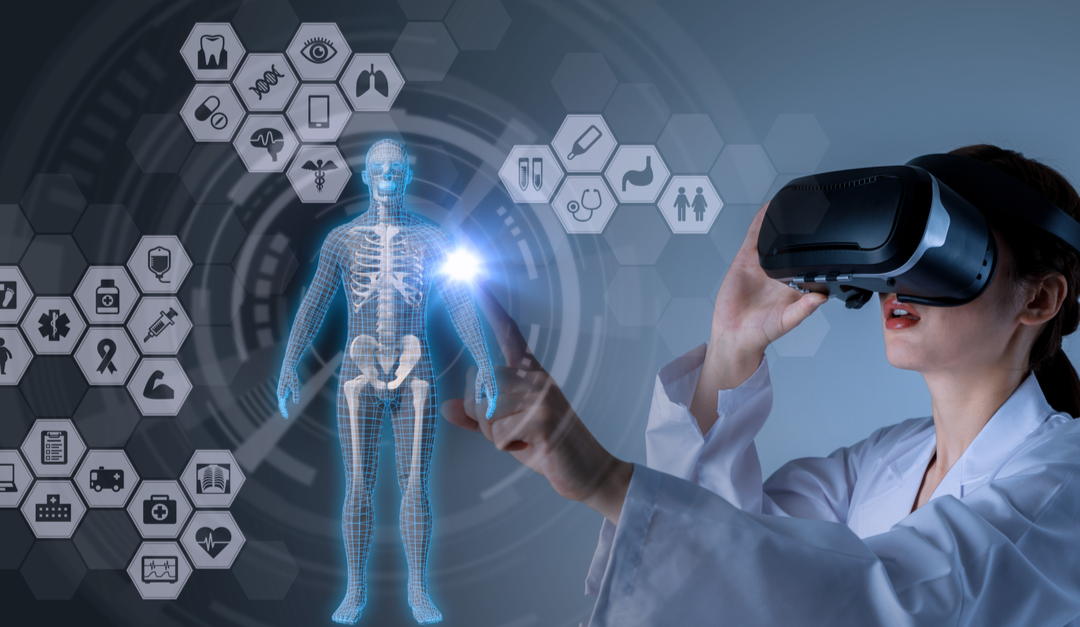Across industries, including healthcare, professional translation and localization services are essential to bringing innovative products to consumers across linguistic and national borders. For the healthcare industry, however, the stakes are often much higher, as the smallest inconsistencies in scientific information can directly impact the quality of care these solutions bring to patients around the world. As the world becomes increasingly interconnected and demand grows for medical therapies and treatments developed in overseas markets, medical communications must rise to meet rigid criteria while simultaneously keeping pace with changing trends in healthcare. Increasingly, these trends are technological, making a strong awareness of emerging technologies and their uses a vital requirement for the industry.
As healthcare providers and research organizations seek technologies that can help provide higher quality care with greater efficiency, augmented reality (AR) and virtual reality (VR) systems present a key area of interest, in some cases already gaining practical adoption. So, what do these innovative tools look like in today’s healthcare landscape, and what do we need to know about their potential impact on how care is delivered?
New Ways of Visualizing HealthCare
While in many ways similar, augmented reality and virtual reality are distinct technologies that give health care providers different means of engaging patients, conducting procedures, and even learning – all with the help of virtual visual media.
Augmented Reality refers to a combination of real and virtual environments. By integrating digital information with the user’s environment in real time, medical education, imaging, dentistry, nurse training and more are augmented in conjunction with the physical real-world surroundings signals like a heads-up display, colored indicators and more.
Virtual Reality, on the other hand, is used to create a fully immersive digital environment. In its medical applications, a doctor or student can be virtually transported inside of the human body to view areas that would otherwise be challenging to visualize, for example, making VR particularly promising for surgery simulation.
AR and VR both provide an array of opportunities for enhanced healthcare in terms of cost, accessibility, and training. With VR headsets like the Microsoft HoloLens, medical students can benefit from the additional interactivity of 3D anatomical holograms or even attend real-time surgical operations anywhere in the world. Utilizing AR in the form of smart glasses, a patient’s vital readings can be displayed in a surgeon’s direct field of view, allowing the surgeon to obtain this information with less need for physical movements that could disrupt the procedure. AR or VR also have applications for the end recipients of healthcare solutions and even health insurance policies. As described by Aetna, businesses and organizations sending their employees abroad may wish to supply them with wellness resources, which can entail challenges that can range from language barriers to geographical limitations, both of which can potentially be mitigated through virtual media.
AR and VR show encouraging signs of success both as solutions unto themselves and as a demonstration of how advancing technology is already bring change to healthcare settings. As these technologies expand the reach of global healthcare, they are likely to play a key role in the effort to reach a more diverse group of individuals with patient-centric care. With linguistic services ranging from OTP interpretation to multilingual translation for software systems, CSOFT Health Sciences is committed to delivering these solutions when and where they are needed, from clinical trials in the JAPAC region to cross-border care delivery.
About CSOFT Health Sciences
CSOFT Health Sciences provides end-to-end medical translations for all phases of the product lifecycle, from pre-clinical to post-launch. We also specialize in market access consulting, medical writing, and CTD/eCTD submissions with the FDA, EMA, and NMPA. Our operations are compliant with ISO 17100 and certified in ISO 9001:2015 and ISO 13485:2016, ensuring our customized solutions meet the rigorous regulatory requirements of global submissions.
About CSOFT
CSOFT International is a leading provider of cross-border communications for enterprises seeking growth in global markets. Our expertise in localization, documentation, and branding encompasses a full range of end-to-end content and consulting services that we deliver in over 250 languages. With a focus in health sciences and smart technology, we work closely with our clients to deliver precision solutions to the challenges of engaging markets, consumers, and regulatory environments worldwide.
